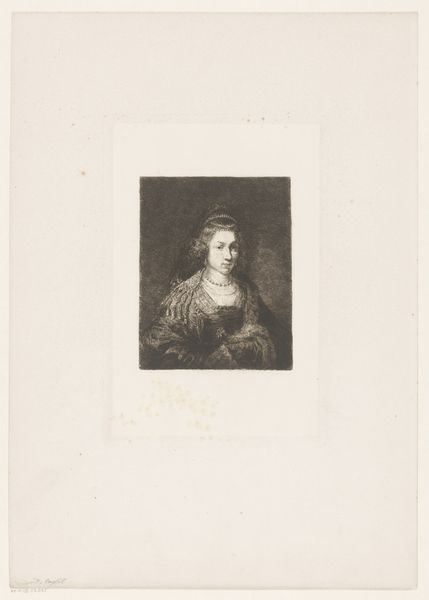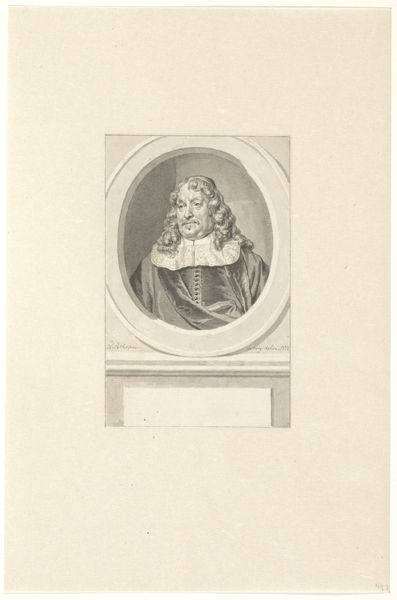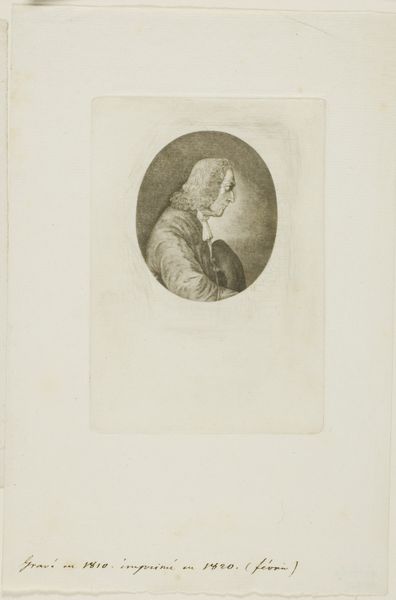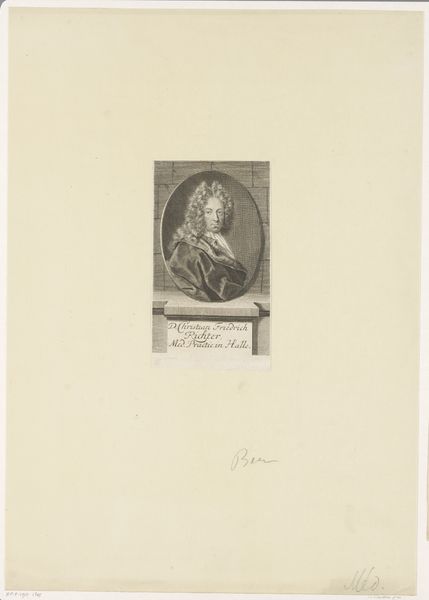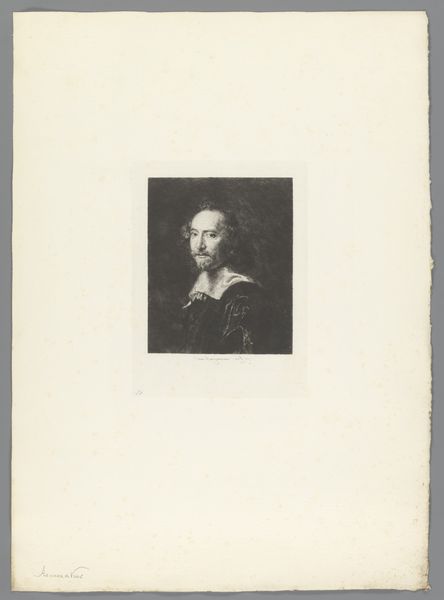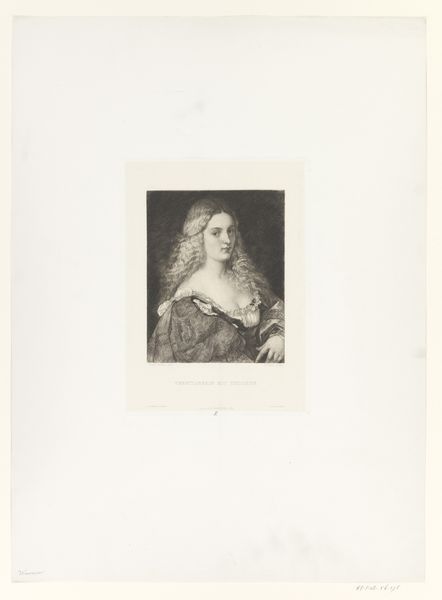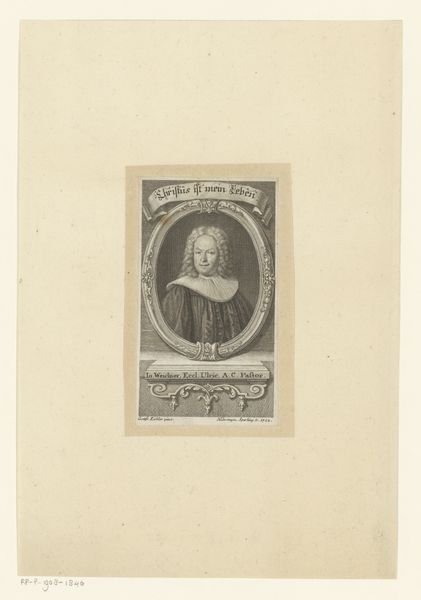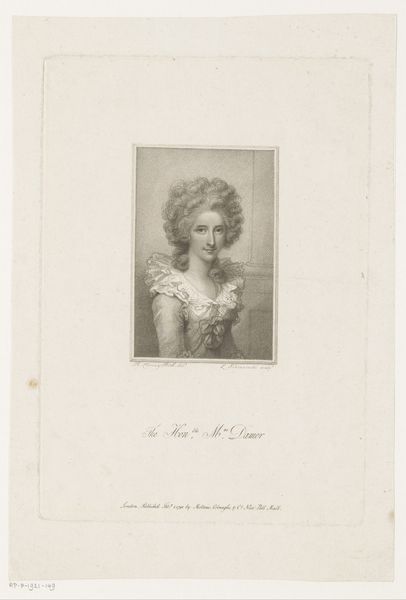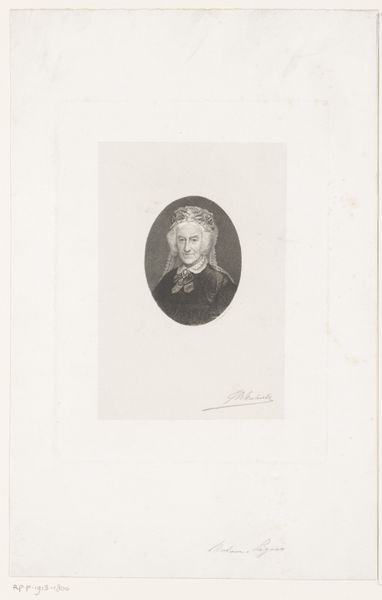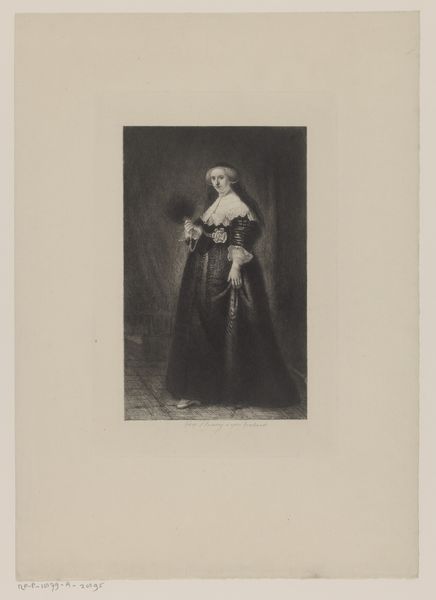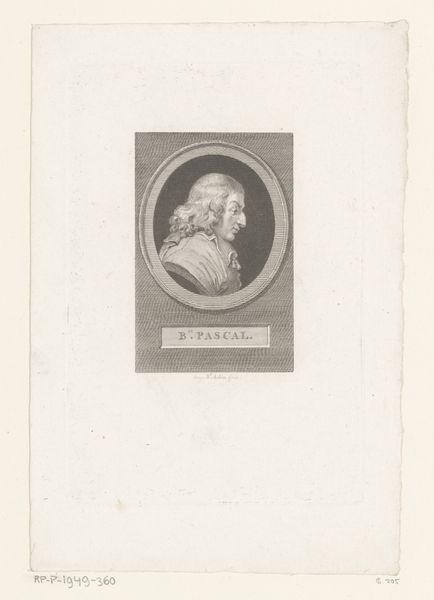
print, paper, engraving
#
portrait
# print
#
paper
#
engraving
#
monochrome
Dimensions: height 201 mm, width 152 mm
Copyright: Rijks Museum: Open Domain
Jules Ferdinand Jacquemart created this print called 'Portret van een vrouw'. The portrait references the formal conventions of Renaissance portraiture, a genre closely associated with wealth and power. Let's consider the time in which Jacquemart was working. In 19th-century France, the institutions of art, such as the Salon system, had a strong influence on artistic production. Artists often looked to the past, drawing inspiration from historical styles and themes. This aesthetic, known as historicism, was a way of legitimizing contemporary society by connecting it to a grand historical narrative. By creating a print in the style of a Renaissance portrait, Jacquemart participates in this historicizing trend. The choice of a print, rather than a painting, suggests that this image was intended for a wider audience, perhaps commenting on the changing social structures of his own time. To understand this artwork better, we could research the Salon system, the history of printmaking, and the social conditions in 19th-century France. Art history is not just about the artwork itself, but about understanding its place in a larger cultural and institutional context.
Comments
No comments
Be the first to comment and join the conversation on the ultimate creative platform.
